The Importance of Speed in Modern Website Design

In today’s digital world, where competition for user attention is becoming more intense by the minute, #WebsiteLoadingSpeed plays a vital role in the success of an online business.
Beyond a technical feature, fast website design is a necessity that directly impacts user experience, SEO, and ultimately conversion rates.
Today’s users are more impatient than ever and expect websites to load in a fraction of a second.
Even a delay of a few hundredths of a second can lead to the loss of potential visitors and customers.
This not only leads to user dissatisfaction but also sends negative signals to search engines like Google.
Google always considers page loading speed as an important factor in search ranking results and places slower websites in lower ranks.
Therefore, investing in speed optimization and agile website design is a strategic decision for any business that wants to succeed in the online space.
This is not only a competitive advantage but also forms the foundation of a positive user experience and strong SEO.
The concept of a #FastAndOptimizedWebsite is no longer a luxury choice, but a vital requirement for survival and growth in the current digital ecosystem.
To achieve this goal, expertise in optimizing code, images, and using appropriate infrastructure is absolutely essential.
Did you know that 85% of customers check your company’s website before any interaction?
With Rasweb, build a corporate website that befits your reputation.
✅ Increased customer credibility and trust
✅ Attracting high-quality leads
⚡ Get free website design consultation
Why Every Business Needs Fast Website Design?

Intriguing Content: Do you really know how much a one-second delay in website loading harms your business? Numerous studies have shown that every second of delay in page loading can lead to a significant decrease in customer satisfaction, reduced page views, and ultimately, lost sales.
For example, Amazon estimates that even a 100-millisecond delay in page loading can reduce their sales by 1%.
These figures show that website speed is a critical factor for profitability.
Furthermore, in today’s mobile-first world, where a huge portion of internet traffic comes from mobile devices, the importance of fast website design doubles.
Mobile users are often on the go and looking for quick access to information.
Slow websites can quickly frustrate mobile users and drive them towards faster competitors.
This directly leads to a high Bounce Rate and reduced user dwell time on the site.
Speed optimization is crucial not only for user experience but also for search engine crawlability.
Faster websites are crawled more easily and frequently by Google bots, which significantly helps improve SEO rankings.
Therefore, for any business looking to grow and sustain itself in the online space, fast website design is considered an essential investment, not an extra cost.
This is an analytical issue that directly relates to your return on investment.
Key Factors in Achieving a High-Speed Website
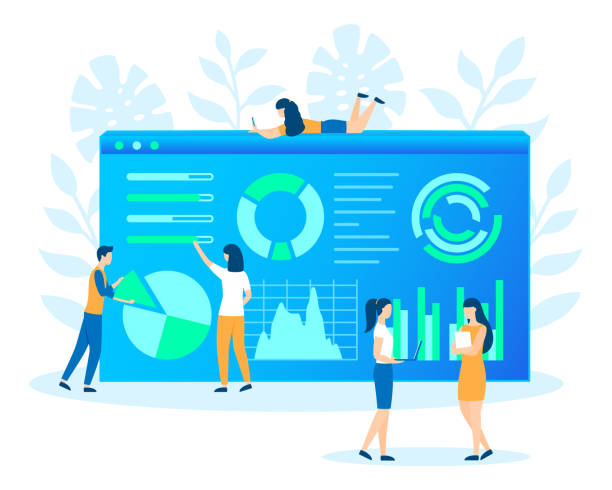
Expertise: Achieving fast website design requires a deep understanding of multiple factors that affect website performance.
One of the most important factors is code optimization.
HTML, CSS, and JavaScript codes must be compressed, clean, and error-free.
Removing whitespace, comments, and unnecessary code (Minification) can significantly help reduce file sizes.
The next item is image optimization.
High-quality images have large file sizes and can slow down website loading.
Using optimized image formats (such as WebP), compressing images without noticeable quality loss, and lazy loading images outside the user’s view are solutions that help increase site speed.
Choosing suitable hosting also plays a vital role.
A powerful server, with sufficient bandwidth and close to your target audience, can drastically reduce server response time.
Also, using Content Delivery Networks (CDNs) to cache content on servers close to users helps accelerate loading for users worldwide.
Fast website design also includes database optimization, content caching, and using fewer HTTP requests.
Each of these items specifically requires correct implementation to ultimately provide a smooth and fast user experience.
Below you can see the table of factors affecting speed:
| Factor | Description | Impact on Speed |
|---|---|---|
| Image Optimization | Compression, using suitable formats (WebP), Lazy Loading | Very High (Reduces overall page size) |
| Code Optimization (HTML, CSS, JS) | Minification, removing unnecessary code, optimizing scripts | Very High (Reduces requests and file sizes) |
| Hosting and CDN Selection | Powerful server, close to user, using content delivery networks | High (Reduces server response time) |
| Caching | Temporary storage of content for faster access on subsequent visits | High (Reduces need for reprocessing) |
| Font Optimization | Choosing low-volume web fonts, correct loading | Medium (Reduces requests and volume) |
Modern Tools and Techniques for Website Speed Optimization
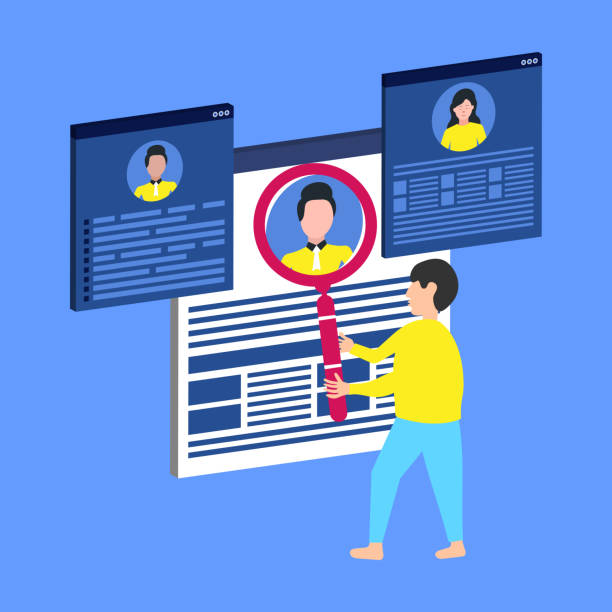
Educational: To achieve fast website design, various tools and techniques are available for developers to utilize.
One of the most widely used tools is Google PageSpeed Insights, which evaluates website performance on mobile and desktop and provides suggestions for improvement.
Other tools like GTmetrix and Pingdom Tools also provide more comprehensive information including loading time, page size, and number of requests.
In terms of techniques, using non-blocking CSS and JS methodologies is of high importance.
This means that CSS and JS codes that are not essential for initial page rendering should be loaded asynchronously or deferred so that page rendering is not blocked.
Implementing AMP (Accelerated Mobile Pages) for news websites or blogs can significantly increase mobile loading speed.
Additionally, using more advanced techniques such as Service Workers to create offline experiences and PWA (Progressive Web Apps) to improve website performance and capabilities on mobile devices can contribute to fast website design.
Finally, continuous learning and staying up-to-date with the latest technologies and best practices in web optimization are crucial for any developer aiming to build high-speed websites.
This approach ensures that websites are not only fast at the moment but also maintain scalability and high performance over time.
Does your current e-commerce website design lead to lost customers and sales?
Rasweb is your solution with modern and user-friendly e-commerce website designs!
✅ Significant increase in conversion rates and sales
✅ Strong branding and building customer trust
⚡ Get free e-commerce website design consultation from Rasweb!
Practical Methods for Increasing Page Loading Speed
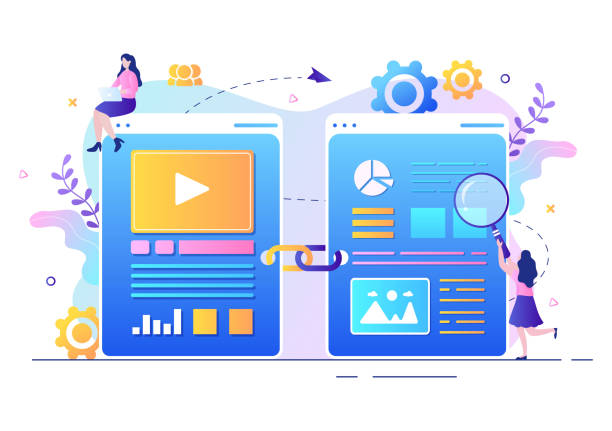
Guidance: To accelerate site loading, there are several practical methods that can significantly improve your website’s performance.
The first step is always image optimization.
Before uploading, compress images and use tools like TinyPNG or Compressor.io.
Also, for new images, consider the WebP format, which has a smaller file size.
Next, implement Minification of CSS, JavaScript, and HTML codes.
This reduces file sizes by removing whitespace, comments, and extra characters.
Browser caching is also very important.
By setting appropriate headers, allow the user’s browser to store static files such as images, CSS, and JS in its cache for a specified period, so there’s no need to re-download them on subsequent visits.
Additionally, reviewing and reducing the number of HTTP requests by combining CSS and JS files (though less essential with HTTP/2) and using sprites for small images can contribute to fast website design.
Removing unnecessary redirects and reducing the number of plugins used (especially in Content Management Systems like WordPress) are also practical solutions.
Optimizing the database by removing extra data and organizing it, especially for large websites, can help with loading speed.
These guidelines will help you move step by step towards a fast and optimized website and provide a better user experience.
Impact of Site Speed on SEO and User Experience
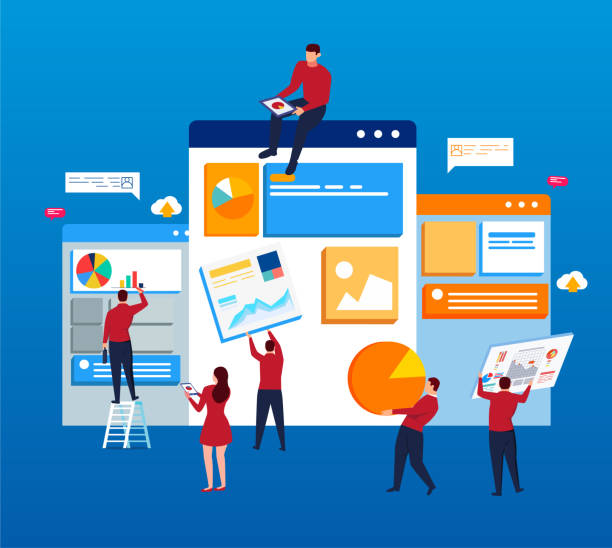
Analytical: Website loading speed impacts not only User Experience (UX) but also profoundly affects Search Engine Optimization (SEO).
Google and other search engines prefer fast websites and give them higher scores in search results rankings.
This means that fast website design can help improve your site’s visibility in search results and attract more organic traffic.
From a user experience perspective, site speed is directly linked to user satisfaction.
Users expect pages to load in less than 2-3 seconds, and if slow, the Bounce Rate significantly increases.
A high bounce rate indicates a poor user experience, and search engines consider this a negative signal.
Furthermore, loading speed also has a direct impact on the Conversion Rate.
Faster websites encourage users more to perform desired actions (such as purchasing, registering, or downloading).
For example, if you have an online store, every second of loading delay can mean losing potential buyers.
Therefore, to achieve strong SEO and provide an unparalleled user experience that leads to increased engagement and conversion rates, website speed optimization is an unmissable priority.
This is a strategic investment whose return will be clearly evident in the long term.
Fast website design forms the foundation of success in today’s digital ecosystem.
Common Mistakes in Website Speed Optimization and Solutions to Avoid Them

Explanation: On the path to achieving fast website design, there are some common mistakes that can nullify your efforts.
One of these mistakes is uploading images with a file size and dimensions much larger than the page actually needs.
Many designers directly upload high-quality original images, whereas their dimensions and size should be optimized for the web.
The solution is to always compress and resize images to appropriate dimensions before uploading, and use modern formats like WebP.
Another mistake is excessive use of unnecessary plugins or JavaScript scripts, each of which can add to the site’s loading time.
To solve this problem, only use essential and high-quality plugins and optimize and minify JavaScript codes.
Not using caching is also a big mistake.
Caching helps display content faster to the user on subsequent visits.
Ensure that server-side and browser-side caching are correctly configured.
Choosing unsuitable and cheap hosting that lacks sufficient resources also severely affects site speed.
Investing in high-quality and high-speed hosting is of great importance.
Ignoring Mobile-First Indexing and not optimizing for mobile is also an error.
Given the high mobile traffic, fast website design for mobile is crucial.
By avoiding these common mistakes, you can effectively achieve the best site loading speed and provide a better user experience.
Below you can see the table of common mistakes:
| Common Mistake | Impact on Speed | Solution |
|---|---|---|
| High-volume Images | Very High (Increases loading time) | Compression, resizing, using WebP, Lazy Loading |
| Suboptimal CSS/JS Codes | High (Blocks rendering, increases requests) | Minification, Defer/Async Loading, removing dead code |
| Lack of Caching | High (Reloads all files) | Activating browser and server caching, using CDN |
| Inappropriate Hosting | Very High (High server response time) | Choosing quality hosting with sufficient resources |
| Heavy Web Fonts | Medium (Increases requests and volume) | Font compression, using Preload for critical fonts |
Success Stories of Fast Website Design in Businesses
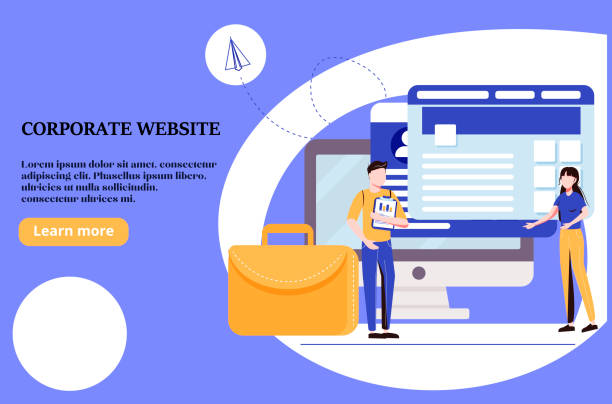
News and Entertainment: In today’s competitive world, success stories of fast website design have inspired many businesses.
One of the most famous examples is Pinterest, which, by optimizing its website speed, managed to reduce waiting time by up to 40%.
This seemingly small change led to a 15% increase in sign-ups and a significant rise in user engagement.
This is a brilliant example of how site speed can directly impact a business’s Key Performance Indicators (KPIs).
Another example is Mobify, which showed that every 100-millisecond improvement in mobile loading speed could lead to a 1.11% increase in conversion rates.
These results clearly demonstrate the importance of investing in fast website design.
Even large news websites like The Washington Post, by focusing on speed optimization and implementing AMP, were able to significantly reduce their page loading times, resulting in increased readership and greater satisfaction.
These stories are not merely statistical examples; they are real experiences of businesses that, by understanding the importance of speed, were able not only to improve their user experience but also to increase their profitability and market share.
These results indicate that building high-speed websites is no longer an optional approach, but a vital strategy for growth and development in the digital space.
Do you have an e-commerce site, but your sales aren’t what you expect? Rasweb solves your problem forever with professional e-commerce website design!
✅ Significant increase in conversion rates and sales
✅ Unparalleled user experience for your customers
⚡ Click to get free consultation with Rasweb!
The Future of Fast Website Design

Analytical: The future of fast website design is intertwined with continuous advancements in web technology and changing user expectations.
It is expected that in the future, Artificial Intelligence (AI) and Machine Learning (ML) will play a more prominent role in speed optimization.
These technologies can analyze user consumption patterns and automatically optimize content for faster loading, or even dynamically allocate server resources.
The emergence of new web standards like HTTP/3 and more advanced tools for performance analysis and debugging will help developers move even beyond current speeds.
The focus on Google’s Core Web Vitals also indicates the growing importance of real and measurable user experience, directly related to loading speed.
Furthermore, increased use of PWAs and Service Workers not only aids faster loading but also provides an app-like experience within the browser.
This trend is moving towards websites that are not only fast but also highly responsive and reliable.
Fast website design in the future will move more towards deeper integration between frontend and backend, automated optimization, and the use of Edge Computing to reduce latency.
Ultimately, the main goal is for users to access their desired content without any delay, which itself means a flawless and friction-free experience.
Therefore, for any business, keeping pace with these developments and continuously investing in website optimization will be key to maintaining competitiveness in the future.
Next Steps to Increase Your Website Speed

Guidance: After understanding the importance and factors influencing fast website design, it’s time to take practical steps.
The first step is to measure your current site speed.
Use tools like Google PageSpeed Insights, GTmetrix, or Pingdom Tools to evaluate your site’s performance and get a comprehensive report of its issues and weaknesses.
These reports usually include suggestions for improvement.
After identifying the issues, develop an action plan to address them.
This plan should include image optimization (compression and format conversion), code Minification (HTML, CSS, JavaScript), activating server-side and browser-side caching, and reviewing and improving your hosting.
If you use a Content Management System (CMS) like WordPress, install and configure speed optimization plugins such as WP Super Cache, W3 Total Cache, or LiteSpeed Cache.
Also, optimizing the database and removing redundant content can be helpful.
Consider that fast website design is an ongoing process, not a one-time task.
After implementing changes, measure your site speed again and monitor the results.
This cycle of measurement, improvement, and monitoring should continue regularly to always ensure the best performance.
By following these steps, you can continuously improve your website speed and provide a better user experience for your audience.
Frequently Asked Questions
| Question | Answer |
|---|---|
| What does fast website design mean? | Optimizing a website for quick page loading in users’ browsers, which leads to a better user experience and higher search engine rankings. |
| Why is website loading speed important? | Increases user satisfaction, reduces Bounce Rate, improves SEO, and boosts conversion rates, as users expect websites to open quickly. |
| What factors affect site speed? | Image size, unoptimized coding (CSS, JS, HTML), unsuitable hosting choice, lack of caching, high number of HTTP requests, and not using a CDN. |
| How can website loading speed be improved? | Compressing images, optimizing and compressing codes, using caching, enabling Gzip compression, using a CDN, and choosing robust hosting. |
| What is a CDN and how does it help site speed? | A CDN (Content Delivery Network) stores website content on various geographical servers, and the server closest to the user delivers the content, which reduces loading time. |
| How significant is hosting’s role in site speed? | Very significant. Strong and suitable hosting with sufficient resources, high bandwidth, and optimized servers forms the foundation of a website’s speed. |
| How does image optimization affect site speed? | Images are usually the heaviest part of a web page. Compressing and optimizing them without significant quality loss drastically reduces page size and increases loading speed. |
| Does site speed affect SEO? | Yes, Google and other search engines consider site speed as one of the ranking factors. Faster sites have a higher chance of ranking better. |
| What tools are available for measuring site speed? | Google PageSpeed Insights, GTmetrix, Pingdom Tools, and Lighthouse, each providing reports and suggestions for speed improvement. |
| How does Caching help site speed? | Caching allows static site content to be stored for subsequent user visits. As a result, the browser doesn’t need to re-download all content, and pages load much faster. |
And other services of Rasweb Advertising Agency in the field of advertising
Smart Content Strategy: Professional optimization for customer acquisition using user experience customization.
Smart Content Strategy: A new service for improving SEO ranking by utilizing real data.
Smart Conversion Rate Optimization: A professional solution for customer acquisition focusing on precise audience targeting.
Smart Website Development: An innovative service for increasing customer acquisition through marketing automation.
Smart Link Building: Professional optimization for increasing site traffic using precise audience targeting.
And over a hundred other services in the field of online advertising, advertising consulting, and organizational solutions
Online Advertising | Advertising Strategy | Advertorial
Sources
- Increase WordPress Website Speed
- Website Speed Increase Solutions
- Website Speed Optimization
- How to Increase Website Speed?
? Ready to transform your business in the digital world? Rasweb Afarin Digital Marketing Agency, with expertise in responsive website design, SEO optimization, and professional social media management, assists you on the path to growth and achieving big goals.
📍 Tehran, Mirdamad Street, next to Bank Markazi, Southern Kazeroon Alley, Ramin Alley, No. 6



